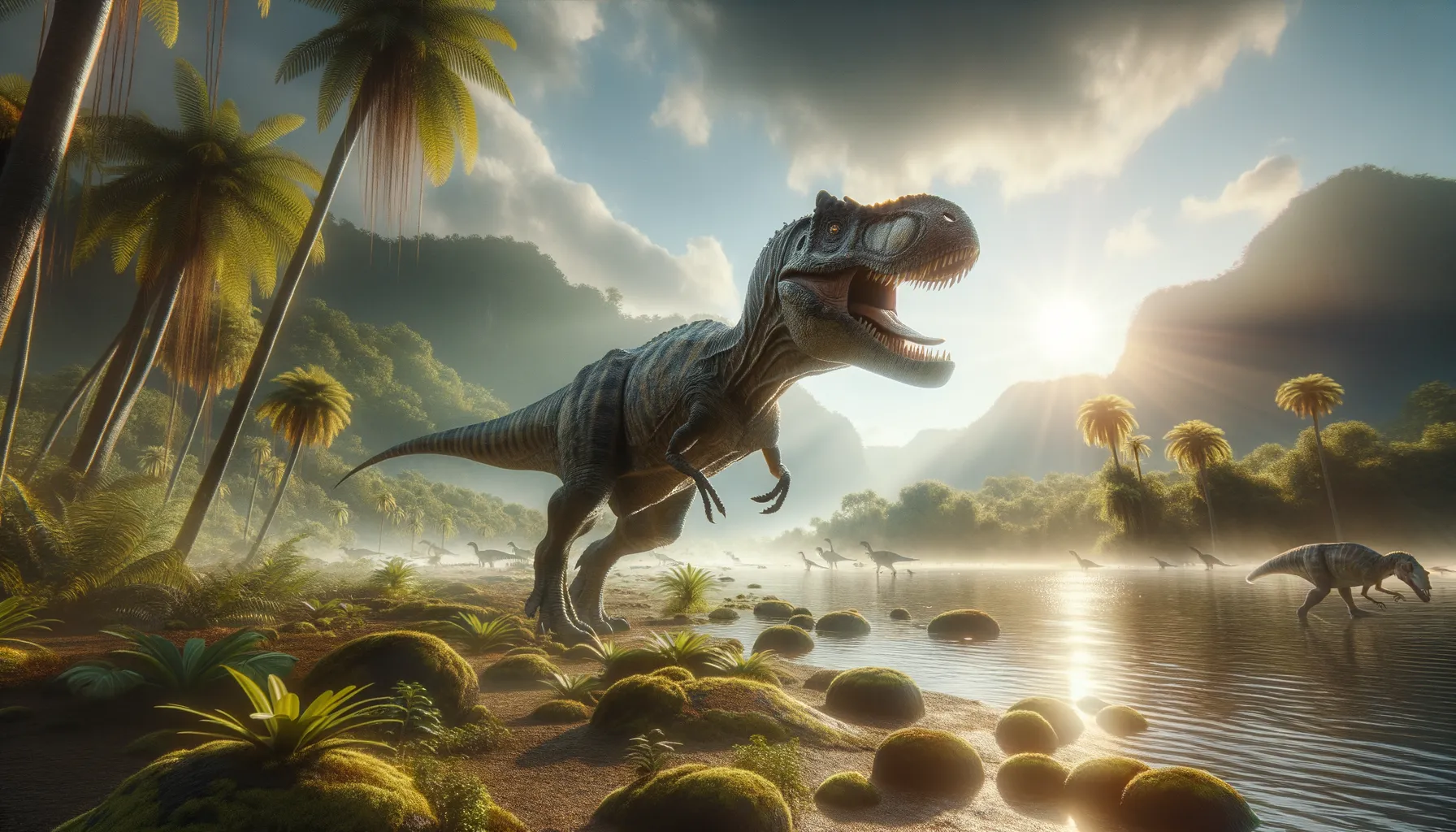
Siamosaurus
Ancient predator with a crocodile's bite!
Period
Cretaceous
Length
Roughly 9 meters in length.
Height
Approximately 2.5 meters tall at the hips.
Weight
Estimated to weigh around 2 tons.
Siamosaurus was a spinosaurid theropod dinosaur that roamed what is now Southeast Asia during the Early Cretaceous period. Known from limited fossil records, it is believed to have had a crocodile-like appearance with elongated jaws and conical teeth, indicative of a piscivorous diet. Its discovery added to our understanding of spinosaurid diversity and distribution, notably in Asia. Only a few fossil remains have given paleontologists a glimpse into its existence.
Diet
Siamosaurus primarily fed on fish, given the shape and structure of its conical teeth. It likely ambushed its prey in a similar manner to modern crocodiles, snapping up fish and perhaps small animals that ventured too close to the water's edge.
Hunting
As a predator, Siamosaurus relied on stealth and its powerful jaws to catch prey. Its semi-aquatic nature suggests it may have hunted primarily in or near water bodies, using its elongated snout to snatch fish from the water.
Environmental challenges
Living in a Cretaceous landscape, Siamosaurus faced challenges including fluctuating water levels and competition for food sources with other predators. Changes in climate could have affected prey availability, requiring adaptation. Additionally, it had to navigate the presence of larger predators and the risks posed by its own hunting endeavors.
Speed
Considered a slow mover, akin to modern alligators.
Lifespan
Estimated to live several decades, similar to large reptiles today.
First discovery
Described in 1986, based on remains found in Thailand.
Fun Facts
- Siamosaurus was a dinosaur that roamed during the Early Cretaceous period, around 130 million years ago.
- This dinosaur's fossils were first discovered in Thailand, making it one of Asia's unique prehistoric creatures.
- Siamosaurus is believed to have been a fish-eating dinosaur, with sharp teeth perfect for catching slippery prey.
- The name 'Siamosaurus' means 'Siamese lizard,' a nod to its discovery location in what was formerly known as Siam.
- Despite its fearsome teeth, Siamosaurus likely spent much of its time near water, similar to modern crocodiles.
- Though known primarily from teeth, these suggest Siamosaurus was related to the Spinosaurus, another massive predator.
- Siamosaurus remains a bit of a mystery, as scientists continue to piece together details of its life from limited fossil evidence.
Growth and Development
Siamosaurus likely experienced rapid growth during its early years, as is common in large theropods. This would have been crucial for reaching a size where it could effectively hunt and avoid becoming prey. Throughout its life, it would have developed stronger muscles and a more refined hunting technique.
Habitat
Siamosaurus inhabited areas with abundant water, such as river deltas and swamps. These environments not only provided a steady supply of fish but also offered shelter and nesting grounds. The warm climate of the Cretaceous period kept these areas lush and teeming with life.
Interaction with other species
As a carnivorous dinosaur, Siamosaurus primarily interacted with other species as predator and prey. However, it shared its environment with other contemporaneous dinosaurs and aquatic life. Competition with other predators would have influenced its hunting areas and strategies.
Natural lifespan
In its natural habitat, it might have lived up to 40 or 50 years.
Reproduction
Siamosaurus would have laid eggs, like other theropods, possibly nesting along riverbanks or sheltered areas. Parental care in dinosaurs is still debated, but it's possible that Siamosaurus guarded its nest until the young hatched, ensuring their early survival.
Social behaviour
While definitive evidence is lacking, Siamosaurus may have exhibited territorial behavior typical of predators protecting hunting areas. Its interactions tended towards solitary pursuits, focusing on hunting and survival rather than social groupings.
Fossil locations
Fossil evidence of Siamosaurus primarily comes from Thailand, specifically from the Khok Kruat Formation. These findings are crucial for understanding the dinosaur's geographical range during the Early Cretaceous period. Additional isolated teeth have been found in other parts of Southeast Asia, hinting at a wider distribution.
